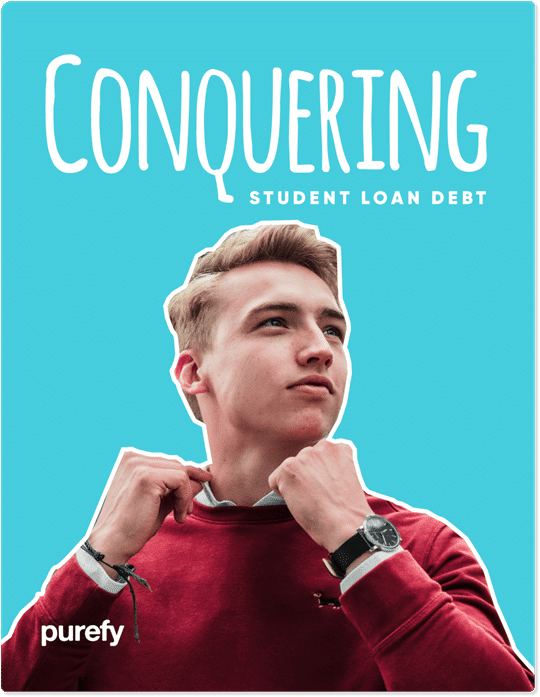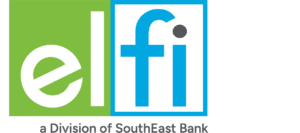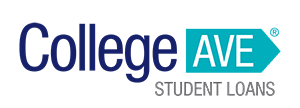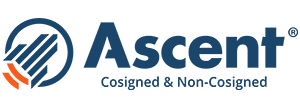Student loans aren’t so bad — right? That depends on your perspective. While they definitely serve a useful purpose and can help you complete your degree, they can be a heavy weight on your shoulders for years after graduation. The One Wisconsin Institute found that graduates take 21.1 years to pay off student loans, on average. If you graduated from college at 21, that means you’ll be making payments until you’re in your 40’s (Ouch).
With interest charges, you could pay thousands more than you initially borrowed over 20+ years of repayment. If you don’t want your debt to accumulate more interest than necessary — and who does? — you need to come up with a plan to tackle your debt. But what is the best way to pay off student loans? The answer is dependent on your situation and future goals.
Understanding your student loan payoff options
Before coming up with a debt repayment plan, you need to understand what options are available. The plans and programs you can use to pay off your loans vary based on the following factors:
- Type of loans: There are two main types of student loans: federal and private. Federal loans tend to have more repayment options than private student loans, so you are more likely to have flexibility with your repayment plan if you have federal loans.
- Loan program: Within the main types of student loans, there are different loan programs. The current federal loan program issues Direct loans. However, some borrowers may still have loans issued through the previous program, Federal Family Education Loans (FFEL). What program your loans are through will affect your eligibility for federal payment plans and forgiveness programs.
- Income: Depending on the type of loans you have and your lender, you may be eligible for alternative payment plans. Some plans base your payments on your discretionary income, so how much you make can impact your minimum monthly payments.
- Extenuating circumstances: If you have federal and private student loans and are experiencing a significant financial issue, such as a prolonged illness or unemployment, you may qualify for special payment plans or student loan forbearance.
Not sure what kind of loans you have? You can find out if you have federal student loans by contacting the Federal Student Aid Information Center; it’s available online or by phone at calling 800-433-3243. To find out if you have private student loans, you can check your credit report for free at AnnualCreditReport.com.
Federal student loan repayment options
The majority of student loan borrowers have federal student loans. Depending on the type of loans you have, you may be eligible for one or more of the following repayment options:
Standard Repayment
The Standard Repayment Plan is the default repayment option for all borrowers are automatically enrolled in when they take out their loans. It will remain as your repayment plan until you apply for another one and get approved. Under the Standard Repayment Plan, your payments are fixed, and you’ll pay the same amount each month for 10 years.
Income-Driven Repayment (IDR)
If you have federal Direct loans and can’t afford your payments under a Standard Repayment Plan, you can apply for one of the four IDR plans:
- Income-Based Repayment
- Income-Contingent Repayment
- Pay As You Earn
- Revised Pay As You Earn
Under an IDR plan, the loan servicer extends your repayment term to 20 or 25, depending on the plan. They also cap your payments at a percentage of your discretionary income, which is based on your income and family size, so enrolling in an IDR plan is one of the best ways to lower student loan payments.
Extended Repayment
Direct loan borrowers with more than $30,000 in outstanding debt can take advantage of the Extended Repayment option. With this plan, the repayment term is extended to 25 years, and payments can be fixed or graduated.
Graduated Repayment
Available to borrowers with FFEL or Direct loans, the Graduated Repayment Plan extends your repayment term to 30 years. Your payments are graduated, meaning they start out low but increase every two years — regardless of your income.
Income-Sensitive Repayment
The Income-Sensitive Repayment Plan is only available to FFEL borrowers. Your monthly payment is based on your income, but your loan will be paid off within 15 years.
Forbearance and deferment
Under some circumstances, you may be eligible for federal loan forbearance or deferment programs and postpone your payments. Forbearances and deferments are available if you return to school, are undergoing cancer treatment, lose your job, or have other financial issues. Depending on the type of forbearance or deferment you qualify for, you could pause your payments for up to three years.
Direct Consolidation
One of the ways to consolidate student loans is through a federal Direct Consolidation Loan. It’s a federal program that combines your loans together and extends your repayment term up to 30 years. Your new interest rate is based on the weighted average of your existing debt, and you can enroll in an IDR plan after consolidating your debt.

Free eBook: How to Conquer Student Loans
Free eBook: How to Conquer Student Loans

Private student loan repayment options
Private student loans have fewer repayment options than federal loans, but there still may be some ways to get some relief.
Standard
The standard repayment plan for private loans varies based on your loan agreement. Your loan term could be five to 20 years in length with fixed or variable interest rates. Refer to your loan agreement to figure out your loan term, minimum monthly payment, and first payment due date.
Financial hardship repayment
Some private student loan lenders have financial hardship programs for borrowers that can’t afford their payments. If you can’t manage your current payment, contact your lender to find out if you can pause your payments, make reduced payments, or qualify for other programs to make your loans more affordable.
Student loan refinancing
Whether you’re trying to figure out how to lower your student loan payment or how to lower student loan interest rates, student loan refinancing can be a smart option. When you refinance, you take out a new loan from a refinancing lender to eliminate your existing loans.
Your new loan can have completely different terms, so you could get a longer repayment term — some lenders offer up to 25 years — or a lower interest rate. Refinancing can allow you to lower your payment or save money over the life of your loan.
What is the best way to pay off student loans?
There is no one-size-fits-all solution for repaying student loans. When deciding on a payment plan or debt repayment strategy, ask yourself the following questions:
What are my goals?
Think about your financial and personal goals. For example, if you want to become a homeowner within the next five years, you may decide that paying off your student loans faster isn’t the right approach for you. Instead, you may want to focus on lowering your student loan payments so you can save more money each month to put toward a down payment on a house.
By contrast, you may want to accelerate your repayment if being 100% debt-free is your main goal.
How much room do I have in my budget?
Look at your budget and how much extra money you have left after paying for your basic expenses. Consider how much of that money you can allocate to your financial goals and extra student loan payments.
If your budget is very tight, you will likely need to focus on strategies that reduce your payments. For example, you could enroll in an IDR plan or refinance your loans and select a longer repayment term.
If you have plenty of cash left over, you can make extra payments and pay off your debt faster. Debt repayment strategies that focus on saving money are likely better for you.
What loans do I have?
The type of loans you have affect what options you can use to manage your debt. Depending on the type of loans you have, you may be eligible for forgiveness programs or alternative payment plans to reduce your payments.
The 2 Best Companies to Refinance Student Loans
Our Top-Rated Picks for 2024 Offer Low Rates and No Fees

How to pay off student loans faster: 7 insanely effective strategies
If you’re like most people, your ultimate goal is to get rid of your student loan debt as quickly as you possibly can. It makes sense — carrying debt for decades is exhausting, and eliminating the debt can be incredibly freeing.
By not having to worry about student loans and monthly payments, you can have extra cash to invest, save for retirement, buy a home, start a business, or travel — or just stash away until you figure out what you want to do with it. Not having debt gives you a tremendous amount of flexibility.
Use these seven tips to pay off your student loans faster and become debt-free:
1. Make extra payments
The minimum monthly payment is calculated to pay off your loans by the end of your pre-determined loan term and not a day sooner. If you want to pay off the loans faster and save money, you have to pay more than the minimum.
Extra payments don’t have to be in the hundreds to be effective. Even small additional payments can add up.
Consider this example: Recent student loan statistics show that the average balance is approximately $30,000, and the average interest rate is 5.8%.
Larry has that balance and rate, and his minimum monthly payment is $330 with a 10-year repayment term. He increased his payment by $50 per month — making it $380 instead of $330. With the added amounts, he paid off his loans 20 months sooner. Plus, he saved over $1,700 in interest charges.
| $330 Monthly Payment | $380 Monthly Payment | |
| Time to Repay | 120 Months | 100 Months |
| Total Interest | $9,610 | $7,875 |
| Total Repaid | $39,610 | $37,875 |
2. Use the debt avalanche method
If you’re like most borrowers, you graduated with multiple student loans, and they can all have different balances, payments, and interest rates. One way to pay off your loans is to use the debt avalanche method. It’s more effective than the debt snowball method that targets the loans with the lowest balance.
With the debt avalanche technique, you make a list of your existing loans ordered from the one with the highest interest rate down to the one with the lowest. You keep making the required payments on all of your loans, but any extra money you have goes toward the account with the highest interest rate.
For example, let’s say you have these three loans:
- $13,000 at 5.00%
- $11,000 at 7.00%
- $6,000 at 6.00%
With the debt avalanche, you target the loan with the 7.00% interest rate first. If you have $70 extra per month to put toward payments, you will make extra payments on that loan. When it’s paid off, you take the total amount you were paying each month toward that loan and dedicate it to the loan with the next-highest rate. In this case, it would be the one at 6.00% interest.
With this approach, you’d pay off your debt in just eight years, and you’d pay $7,319 in interest. That’s less than you’d pay in interest charges if you used the debt snowball approach.
3. Ask your employer for help
There’s a chance your employer may be willing to help you with your loans. In fact, some even have formal repayment programs that match your payments up to a percentage of your salary.
The Society for Human Resource Management reported that only about 8% of employers had student loan repayment assistance programs as of 2020. But with today’s worker shortage, employees have more negotiating power. Many employers are offering additional benefits to recruit and retain employees. Talk to your company’s human resources department to see if a student loan program is available, or if one could be added to your benefits package.
4. Research state loan assistance programs
If you’re in a high-demand field, you could get a substantial amount of help paying off your debt. Federal and state government offices offer student loan repayment assistance programs to attract workers. It could cover a large portion of your existing loans. For example:
- Veterinary Medicine Loan Repayment: Veterinarians that work for at least three years in a designated shortage area can get up to $25,000 per year in student loan repayment assistance.
- Attorney Student Loan Program: Attorneys employed by the Department of Justice can receive up to $60,000 in repayment assistance. The program has a service requirement of three years.
- California Vocational Nurse: Nurses in California can receive up to $6,000 per year to repay their student loans in exchange for a 12-month service commitment. They can receive the award up to three times, giving them a total of $18,000 in student loan repayment assistance.
You can find similar programs by contacting your state education agency and your field’s professional association.
5. Find out if you’re eligible for loan forgiveness
If you have federal student loans, you may be eligible for partial or full loan forgiveness through one of the following programs:
- Public Service Loan Forgiveness (PSLF): Federal loan borrowers that work for government offices or non-profit organizations for at least 10 years while making 120 qualifying payments can have their loans forgiven through PSLF.
- Teacher Loan Forgiveness: If you are a teacher in a high-need subject, you can get up to $17,500 in loan forgiveness after teaching for five full and consecutive years in a low-income school or educational service agency.
- IDR forgiveness: If you are enrolled in an IDR plan and still have a loan balance after making payments for 20 to 25 years — it varies based on your plan — the remaining balance will be forgiven.
6. Take advantage of discounts
Both federal and private student loan lenders offer autopay discounts. If you sign up for automatic payments and agree to have money withdrawn from your account every month, the lender will typically reduce your interest rate by 0.25%. Over time, that discount can help you save hundreds of dollars and pay off your loans faster.
7. Refinance your student loans
What is the best way to pay off student loans? If your goal is paying off your debt faster and you want to figure out how to save money on student loans, consider student loan refinancing. It can be an incredibly effective tool, and you can save thousands after taking just a few minutes to complete an application. And you can use our college loan refinance calculator to see how much you’d save.
See How Much You Can Save
View Details
Collapse
Step 3: See How Much You Can Save
$15,310
Lifetime Interest
Savings
$1,018
New Monthly
Payment
$128
Monthly
Savings
| Current Loan | New Loan | Savings | |
|---|---|---|---|
| Rate | 6.7% | 4.2% | 2.5% |
| Lifetime Interest | $37,520 | $22,210 | $15,310 |
| Monthly Payment | $1,146 | $1,018 | $128 |
Like what you see? Check your actual prequalified rates from the industry’s top lenders in just 2 minutes or less.
Consider this example: Sharon has $30,000 in student loans at 5.8% interest and a 10-year repayment term. Determined to get rid of her debt as quickly as she could, Sharon refinanced and opted for a shorter loan term of seven years. With her credit score and the shorter loan term, Sharon qualified for a 3.75% interest rate. If your debt is a little bit higher, read this article to learn how to pay off $100K+ in student loans.
With the new loan term and interest rate, her monthly payment increased. But Sharon paid off her loans three years sooner, and she saved over $5,400 in interest charges.
| Original Loan | Refinanced Loan | |
| Interest Rate | 5.8% | 3.75% |
| Repayment Term | 10 Years | 7 Years |
| Monthly Payment | $330 | $407 |
| Total Interest | $9,607 | $4,156 |
| Total Repaid | $39,607 | $34,156 |
| Total Savings: $5,451 |
To get the best interest rates possible, make sure you follow these steps:
- Check your credit: When evaluating your loan application, student loan refinancing lenders will review your credit report and credit score. It’s wise to check your credit report ahead of time to see if there are any issues or inaccuracies. If you have high balances on revolving credit, such as your credit cards, pay them down to improve your credit so you have the best chance of getting approved.
- Decide on an interest rate type: Refinancing loans can have fixed or variable interest rates. Fixed rates stay the same for the entirety of your repayment term, so your payments never change either. With variable interest rates, the interest rates usually start off quite low — even lower than fixed rates — but can change over time. Fixed-rate loans make sense if you want a predictable monthly payment and think it will take you more time to pay off your debt. Variable-rate loans are best for those that want to pay off their debt aggressively since they can take advantage of the lower initial rates.
- Apply with a cosigner: If your credit score is less-than-perfect, you can still qualify for student loan refinancing if you apply with a cosigner with good credit and a reliable source of income.
- Choose a shorter loan term: Lenders typically give the lowest rates to borrowers with excellent credit that opt for shorter loan terms, meaning terms of five to eight years. Your monthly payment will likely be higher with a shorter term, but you’ll get a lower interest rate and save more money than if you opted for a longer repayment period.
- Get offers from multiple lenders: Rates and terms can vary by lender, so get quotes from several. Compare their offers and pick the one that fits your needs best.
Eliminating your debt for good
The best way to pay off student loans varies by person. A common question people have is, “Should I refinance my student loans?” However, the answer is dependent on your goals and current finances. Student loan refinancing makes a lot of sense for those that want to become debt-free as quickly as they can. And, it can be a powerful way to save money over the life of your loan.
Sound like you? You can use Purefy’s Compare Rates tool to fill out one simple form and get quotes from top refinancing lenders. Once you find the best loan for you, you can complete the application online and be on your way to saving money.



















